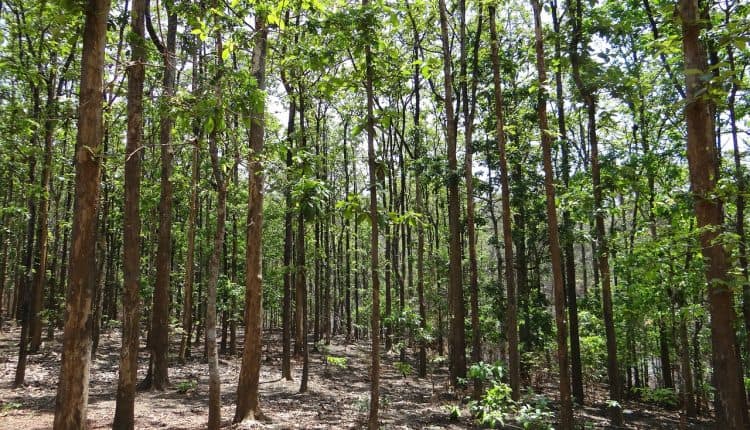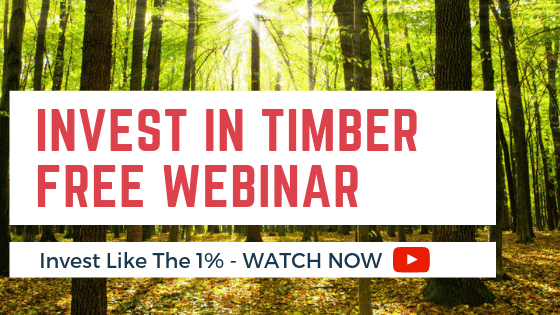Once again, we have prepared an article that seeks to answer some of the undoubted multitudes of questions that potential investors in teak will have. Make sure to read the Teak FAQ Part-1 article, which deals with general subjects relating to the teak tree and to the Teak Hardwoods company and make sure to check out Teak FAQ Part-3 to understand how investing in teak can lead to residency in a foreign country for your own backup plan.
This article seeks to clarify various investment aspects of investing in teak. It covers such things as the monetary requirements of an investment in teak, as well as the potential risks associated with a teak investment.
How Much Does It Cost To Invest In Teak?
For investment into teak through Teak Hardwoods, there is a minimum investment. For the Panama plantation, the minimum investment is $15,700 which will provide you with a 1000 m2 teak parcel. For the Nicaragua plantation, the minimum investment is $26,500, which will provide you with a 1.25-hectare teak parcel.
There is also a minimum deposit. It is $5,000 at the time of the signing. After that, there is a 4 month period in which to pay the remainder. Once all payments have been made and the final paperwork has been received, there is a 15 day period during which all monies are 100% refundable. If you are unable to pay in full but would like to participate in the program, please contact expat@teakhardwoods.com to discuss potential payment plans. (Prices increase annually as the trees continue to grow and become more valuable.)
When Can I Invest?
There is no deadline for making an investment, though it should be noted that teak parcels are sold on a first come, first serve basis. Parcels will be sold to those who reserve their parcel(s) first. This is true for the Nicaragua and Panama teak plantations.
Teak trees reach their peak value at approximately 25 years old. I use the word approximately because this number is slightly flexible. For example, if it appears that selling the teak at 24 years old, instead of 25 years, will net the highest returns, we can do this without diluting the teak’s value. This is good news, as it gives us the flexibility to sell the teak at the optimal price.
As stated above, the teak will be harvested and sold at approximately 25 years old. Therefore, you will see a return on your investment when the teak is sold at approximately 25 years of age. For our Nicaragua teak, which was just planted this year, this means that a return on investment will be seen in approximately 25 years. For our Panama teak, which is already 17 years old, a return on investment will be seen in approximately 8 years.
In lieu of monthly maintenance fees, a 20% maintenance and care fee is deducted at the time of harvest. This means that you will not have to worry about paying maintenance fees while your teak is growing.
What Are The Risks?
There are several potential risks involved in purchasing a teak plot. These risks include fire, insects, disease, droughts, theft and political turmoil. Many of these risks, such as fire, insects and disease are mitigated by the natural resistances that teak develops, however, they are still present. In addition, our timber management company works to prevent the propagation of these potential risks.
Teak is a truly incredible tree. Due to the high oil content of the wood, teak actually develops resistance to fire when it reaches 3 years old. Prior to that, we take care to maintain the environment that the teak grows in, by doing such things as removing any grass or other ignitable undergrowth during these first few years.
Much care is taken to ensure the safety of the teak trees grown by Teak Hardwoods. At our plantation at Gran Pacifica, Nicaragua, we have 24/7 surveillance to ensure the safety of the teak trees. In addition, using advanced RFID technology, the professional security assigned to the plantation is able to track each individual tree from its first few years of growth all the way to its final delivery at the mill.
At our Panama plantation, a security team is hired to watch over the teak plantation so as to stop theft. In Panama, the Darien Province is primarily well known for its teak plantations. The management team who manages a vast majority of these plantations is GeoForestal – the same company we use. Through the services of GeoForestal, there is a frequent presence in the region. Once the trees reach an age where they become valuable, 23-25 years old, there is increased security around the plantation. Do take note these are HARD wood trees! 40ft in size, weighing a tremendous amount. For someone to steal a teak tree, they would need intense saws and a truck large enough to haul away the tree.
Experience the Insider community that takes your international lifestyle to the next level. Download your FREE guide
"18 Steps to Implementing Your Plan B" instantly!
Are The Governments Where The Trees Are Grown Safe?
Central America, specifically the nations of Nicaragua and Panama, have had stable governments for the past several decades. There is no guarantee, however, that this will continue, and as such political turmoil is a potential risk factor to teak owners. Likewise, natural disasters and droughts may occur, and these too are potential risk factors to teak owners.
In addition to the risks discussed above, there is no guarantee that teak prices will increase over time. Teak prices have historically increased at an average rate of 5.5% per year. It is expected that this will continue, and in fact may accelerate as global demand for teak grows while global supplies dwindle, however, no one can predict the future, and this may not be the case. It cannot be guaranteed that teak prices will rise. They may become stagnant or even decrease.
Who Is Involved?
Finally, some of you may be wondering about the risk involved with investing in Teak Hardwoods. “How do I know this company will be around in 5, 10, 25 years when the teak will be ready for harvesting?” Rest assured, Teak Hardwoods, and its operators, are dedicated to this project and will be around for a long time to come.
Mike Cobb and Joel Nagel, started this project as a personal investment because they understood the value that stands behind the teak trees. They were approached by some dear friends who asked if they would be interested in dividing up their land to sell parcels to folks. They agreed because they wanted others to have the opportunity to capitalize on a teak investment and to obtain residency in a foreign country. This really is a win-win for all involved. Mike and Joel have been on the ground since the beginning, since the seedlings were first planted 17 years ago, and, along with the teak trees, are securely rooted at this site. It’s safe to say Mike and Joel are not going anywhere, and neither are the teak trees.
Final Thoughts
We hope that this article has been able to answer all of the questions you may have in regards to the investment aspects of teak. Teak truly is an excellent investment, and one that we think can provide financial security and a means of generational wealth stewardship to many. For these reasons, we want those interested in a teak investment to understand exactly what the financial requirements and risks are when getting involved with a teak investment. If you have questions regarding the investment specifics of teak that were not answered in this article, please contact us.
In-demand, yet of dwindling supply in the marketplace, Teak is a remarkably valuable hardwood that is extremely durable, practical, and beautiful. To learn more about this opportunity watch this special presentation by Rachel Jensen and Mikkel Thorup.
Like Our Articles?
Then make sure to check out our Bookstore... we have titles packed full of premium offshore intel. Instant Download - Print off for your private library before the government demands we take these down!








